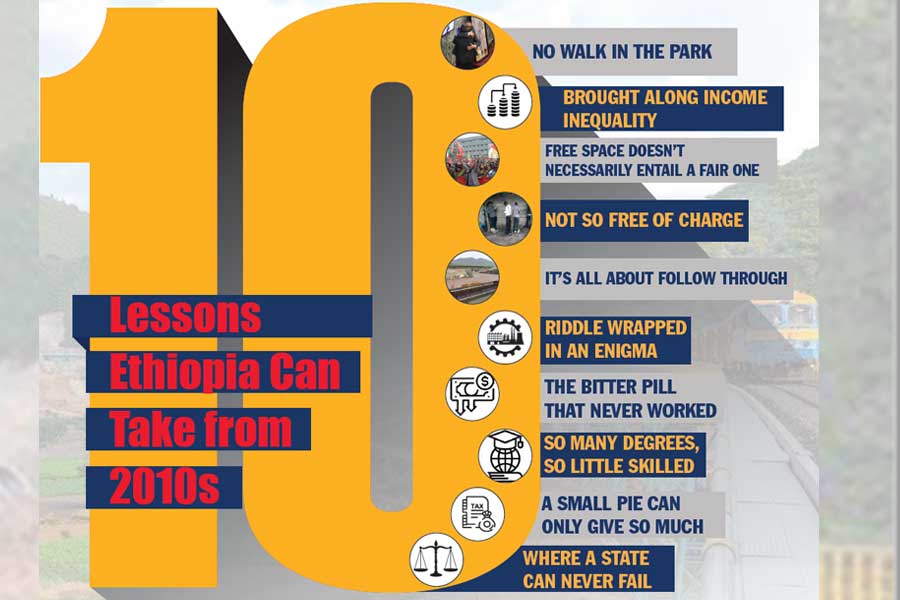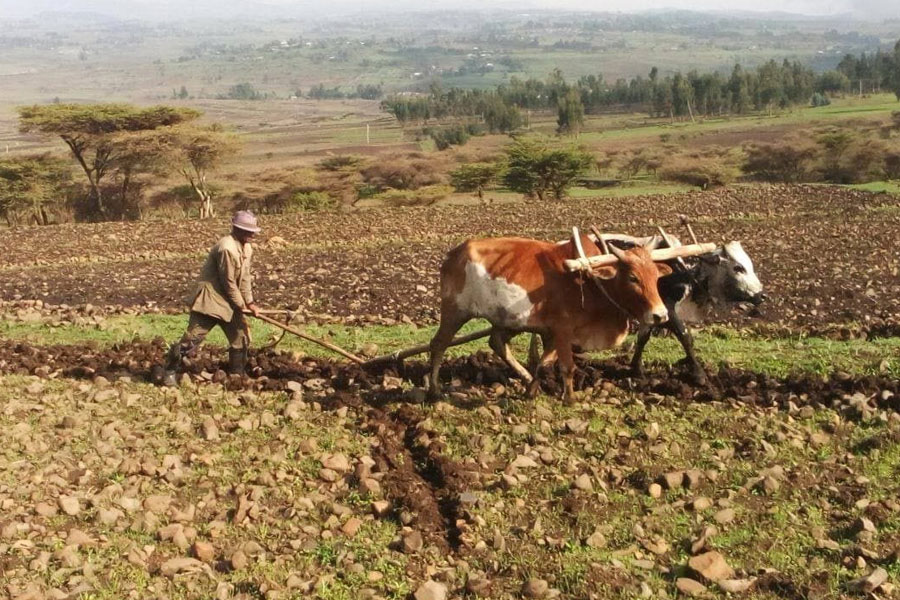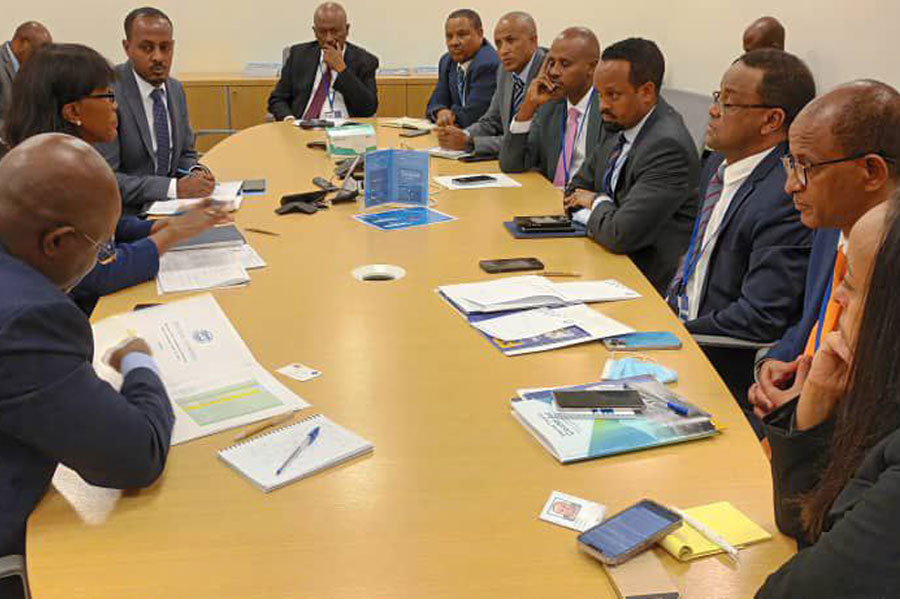
Radar | Apr 26,2019
The government has hired Siemens Gamesa Renewable Energy, a Danish firm, to install the 29 turbines for the Assela I Wind Project for 143 million euros.
Officials from Ethiopian Electric Power (EEP) and executives from Siemens signed the agreement in a virtual meeting at the end of last week. Financed by Danida Business Finance, the project has 100MW of power capacity. The loan agreement, amounting to 200 million dollars, was signed between the two countries two years ago. Half of the loan is a grant, while the remainder is a loan.
One of the conditions of the loan agreement is to give the project exclusively to Danish companies, according to Ashebir Balcha, CEO of Ethiopian Electric Power.
In January, EEP announced a restrictive bid and invited only two companies, Vestas Wind Systems and Siemens Gamesa, and the latter won the bid by offering the lower price. Siemens Gamesa, the second-largest wind turbine manufacturer in the world, is a Spanish-based engineering company that mainly manufactures wind turbines and provides onshore and offshore wind energy services.
The wind project has the modality of an engineering, procurement, construction and commissioning contract (EPC), and it requires five years of operations and maintenance services. Based on the agreement, Siemens Gamesa-Denmark will control 60pc of the development of the project, whereas Simens Gamesa-Spain, the parent company, will have a 40pc stake.
EEP also hired a consultant to supervise the project last month after floating a closed bid in April of last year. For the consultancy services, EEP considered two companies based in Denmark: COWI and SWECO. COWI, an international consulting group that works mainly on engineering, environmental science and economics, was then awarded a contract to supervise the project.
“This is a vital project, as it is financed solely by Denmark's government from the start as compared to other EPC projects,” said Ashebir.
The Assela I Wind Project, which is located about 150Km south of the capital on the edge of the Rift Valley near Itaya town in Oromia Regional State, has 29 turbines, each of which has the capacity to generate 3.45MW of energy at a time.
The feasibility study for the project was conducted by EEP, while the environmental, social impact, and wind measurement assessments were financed by the African Development Bank (AfDB) at an expense of 1.8 million dollars. AfDB will also fund the grid connection and a substation with an estimated cost of 10 million dollars.
The wind farm is expected to generate 330,000KWh annually and provide power for half a million people.
Although Ethiopia has the potential to generate 1.3 million megawatts of wind energy, the country has three operational wind farms with a total capacity of 324MW. Adama I (51MW), Adama II (153MW) and Ashegoda (120MW) are the operational farms.
Within the first half of the fiscal year, around 3.7 billion kilowatt-hours of electric power was generated, which was 106.9pc higher than this period during the previous year. From the total production of electricity, 95.5pc was generated from hydropower, 1.2pc from biomass, and 4.2pc from wind.
One of the main constraints of wind projects is their impact on the environment, according to Tigabu Atalo, an independent energy consultant.
"This is especially because it disturbs the ecosystem and land usage," he said. "However, lower turbines like this cause minimal impact on the environment."
Besides incentivizing implementation and competition, projects like this should have the option of a public-private partnership (PPP) arrangement, according to Tigabu.
"This doesn't mean that this project isn't good," he added.
Last month, the Public-Private Partnership Directorate under the Ministry of Finance approved five wind projects that are to be developed in collaboration between the state and private investors. Aisha II, Diday, Adigala, Debre Birhan and Dire Dawa are the projects with a total capacity of 750MW of energy.
PUBLISHED ON
May 02,2020 [ VOL
21 , NO
1044]

Radar | Apr 26,2019

Viewpoints | Mar 21,2020

Fortune News | Aug 28,2021

Fortune News | Jan 05,2020

Fortune News | Dec 23,2023

Agenda | Oct 15,2022

Viewpoints | Dec 04,2020

Radar | Aug 07,2025

Radar | Dec 19,2018

Radar | Sep 18,2022

Dec 22 , 2024 . By TIZITA SHEWAFERAW
Charged with transforming colossal state-owned enterprises into modern and competitiv...

Aug 18 , 2024 . By AKSAH ITALO
Although predictable Yonas Zerihun's job in the ride-hailing service is not immune to...

Jul 28 , 2024 . By TIZITA SHEWAFERAW
Unhabitual, perhaps too many, Samuel Gebreyohannes, 38, used to occasionally enjoy a couple of beers at breakfast. However, he recently swit...

Jul 13 , 2024 . By AKSAH ITALO
Investors who rely on tractors, trucks, and field vehicles for commuting, transporting commodities, and f...

Oct 4 , 2025
Eyob Tekalegn (PhD) had been in the Governor's chair for only weeks when, on Septembe...

Sep 27 , 2025
Four years into an experiment with “shock therapy” in education, the national moo...

Sep 20 , 2025
Getachew Reda's return to the national stage was always going to stir attention. Once...

Sep 13 , 2025
At its launch in Nairobi two years ago, the Africa Climate Summit was billed as the f...